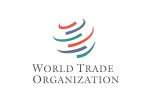
 World trade is headed for a slowdown, according to forecasts released by two global groups this month.
World trade is headed for a slowdown, according to forecasts released by two global groups this month.
In an updated trade outlook released on October 5, the World Trade Organization (WTO) said world trade will lose momentum in the second half of this year and remain subdued in 2023.
WTO economists attributed the slowdown to multiple shocks on the global economy as import demand softens, Europe deals with high energy prices due to the Russia-Ukraine war, monetary policy tightens in the United States, China continues its zero-COVID policy, and food insecurity and debt plagues developing countries.
Similarly, the International Monetary Fund (IMF) announced on October 11 that it projects global economic growth to slow under the burden of high inflation, the impact of Russia’s war in Ukraine and lingering effects of the pandemic.
World Merchandise Trade
According to the WTO, world merchandise trade is now expected to grow by 3.5% in 2022 and slow to 1.0% growth in 2023, revised down from 3.4%. The WTO forecast estimates that world gross domestic product (GDP) will grow by 2.8% in 2022 and 2.3% in 2023. If this current forecast is realized, trade growth will slow sharply but remain positive in 2023.
At the beginning of 2022, the United States was dealing with congestion and backlogs at West Coast ports causing supply disruptions that were compounded by decreased container handling and pandemic-related stoppages in China.
By the second half of 2022, such disruptions to the supply chain have lessened due to a clearance of ports showing a small positive impact on imports by North America and Asia.
Growth Areas
The WTO predicts that the Middle East will have the strongest trade volume growth of any region in 2022, on both the export (14.6%) and the import side (11.1%). Africa also has shown resilient trade growth, and both the Middle East and Africa are expected to see 5.7% trade growth in 2023.
Global energy prices rose 78% year-on-year in August while food prices were up 11%, grain prices were up 15% and fertilizer prices were up 60%. Food prices also have risen sharply as Ukraine is a major exporter for fertilizer and grains. In the United States and Europe, gas prices remain high by historical standards.
Manufacturing Stalls
The WTO forecast suggests that while stocks of finished goods have risen and delivery times shortened, global manufacturing activity has stalled, leading to the slowing of goods trade in the coming months. Economic indicators tracked by the WTO also show that although inflationary pressure remains high, inflation may have peaked.
As a result of price changes, trade in the first half of 2022 was up 32% compared to 2019. Inflation has caused merchandise trade values to grow at double-digit rates, while trade growth in volume remains in the low single digits.
Some good news is that the WTO has seen a strong rebound of exports of travel and transport services in many countries, as pandemic restrictions have finally eased. China is the exception, as the country continues its zero-COVID policy. Trade in services did not decline as much during the pandemic and continues to grow at a modest pace.
Forecast Risks
The WTO acknowledges risks to their forecast, which include banks raising interest rates while aiming to tamp down inflation, as the banks could overshoot and trigger a recession, which would affect imports. Escalation of the Russia-Ukraine war also could destabilize the global economy.
The WTO also notes the underappreciated risk of decoupling major economies from global supply chains which would exacerbate supply shortages in the near term and reduce productivity over the longer term.
International Monetary Fund
The IMF expects global growth to slow to 2.7% in 2023 — 2 percentage points lower than their July 2022 forecast, with a 25% probability that it could fall below 2%. The IMF expects growth to remain unchanged in 2022 at 3.2%.
The IMF’s projection reflects more than one-third of the global economy contracting in 2023, while the economies of the U.S., European area, and China will continue to stall. The IMF also notes similar downside risks, including the risk of monetary policy miscalibration.
As the global economy continues to recover from post-pandemic supply disruptions and is now hampered by new shocks, expanding world trade is even more important for boosting economic growth and resiliency in an interconnected world.

